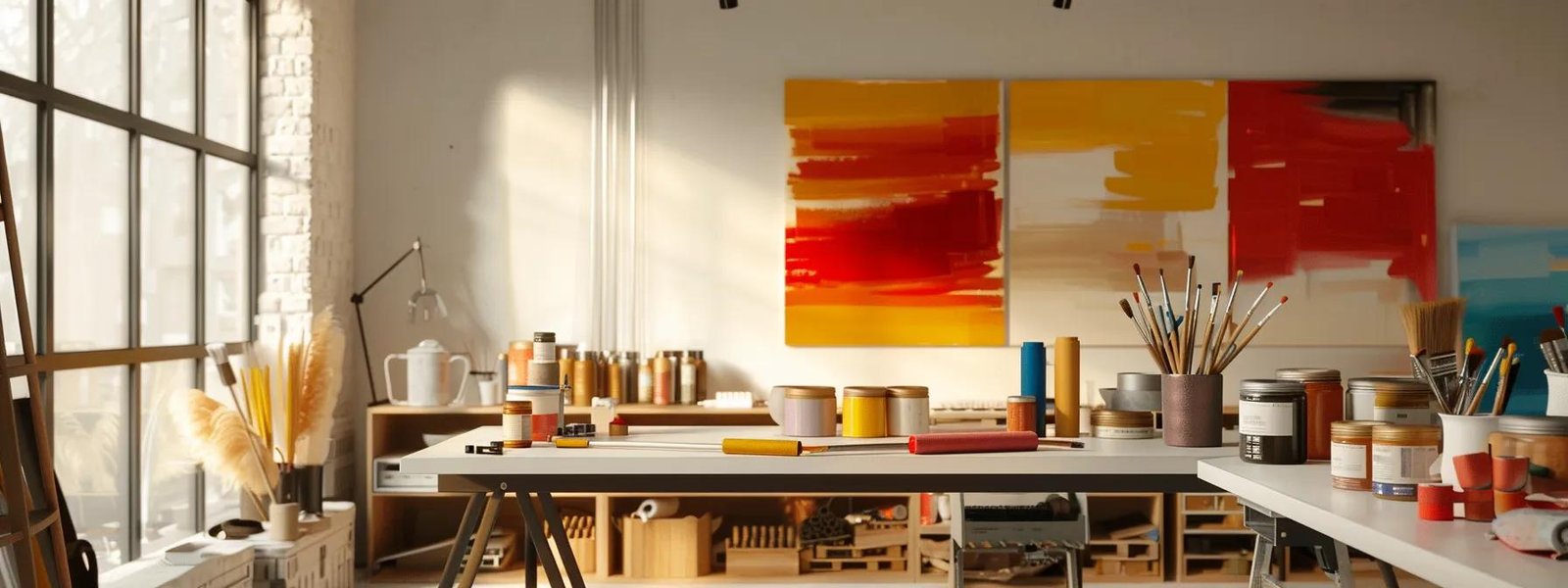Table Of Contents:
- Master Interior Painting Techniques for Stunning Homes
- Preparing Surfaces: The Groundwork for Flawless Interior Painting
- Selecting Optimal Materials: Paints and Tools for Beautiful Home Interiors
- Executing Core Interior Painting Techniques for Homes With Precision
- Achieving Stunning Results: Advanced Home Painting Strategies
- Resolving Challenges: Ensuring a Professional Painting Outcome
- Preserving Your Work: Long-Term Care for Painted Home Interiors
- Frequently Asked Questions
- Final Thoughts
Master Interior Painting Techniques for Stunning Homes
Interior painting transforms your home by freshening its appearance and protecting surfaces. In fact, what happens if you don t paint your house, when left unprotected, can lead to unexpected damage and deterioration. This article explains how to prepare surfaces, select optimal materials, master painting techniques, apply advanced strategies, resolve common challenges, and preserve your work—all to enhance interior design and renovation projects.
Preparing Surfaces: The Groundwork for Flawless Interior Painting
Before you begin painting, proper surface preparation is key for superior adhesion and lasting durability.
Cleaning Walls Thoroughly for Superior Paint Adhesion
Clean your walls to remove dust, grease, and old, flaking paint that can hinder adhesion. Use a mild detergent with warm water and a soft sponge, and allow surfaces to dry completely.
Smoothing Imperfections for an Even Canvas
Repair dents, cracks, or holes using a high-quality patching compound and putty knife. Once dry, sand with fine-grit sandpaper to achieve a smooth surface that enhances both aesthetic and longevity.
Masking Trim and Fixtures With Painter‘s Tape
Apply painter’s tape along baseboards, window frames, and door trims to protect them from paint splatters and create crisp, professional lines.
Applying the Correct Primer for Your Project
Primer improves adhesion and durability. Choose a primer suited to your wall material—latex-based for drywall and oil-based for stained surfaces—to ensure accurate color representation and longevity.
Calculating Your Paint Needs Accurately
Measure walls and ceilings, subtracting areas for windows and doors. Use a paint calculator or manufacturer charts (around 350–400 square feet per gallon) to avoid waste and ensure efficient application.
Selecting Optimal Materials: Paints and Tools for Beautiful Home Interiors

High-quality materials are essential for a successful painting project. This section covers the selection of paints, brushes, rollers, and accessories.
Differentiating Paint Types and Sheens for Home Use
Interior paints come as latex, acrylic, or oil-based. Each type offers specific advantages in durability, drying time, and ease of cleaning. Choose from various sheens—matte for hiding imperfections or gloss for high-traffic areas.
Choosing High-Quality Brushes and Rollers
Select synthetic brushes for water-based paints and use rollers with appropriate nap lengths to ensure even coverage and minimize brush marks, resulting in a more consistent finish.
Gathering Essential Painting Accessories
Stock essential accessories like paint trays, extension poles, drop cloths, and mixing sticks. These tools streamline the process and protect floors and furniture during painting.
Picking Harmonious Colors for Your Home’s Atmosphere
Consider the room’s purpose and lighting when selecting colors. Use swatches and digital tools to visualize the final look, ensuring a cohesive ambiance that enhances interior design.
Considering Low-Voc or Zero-Voc Paint Options
For better indoor air quality, opt for low-VOC or zero-VOC paints. These paints minimize harmful emissions and odors, making them ideal for family homes and aligning with eco-friendly building practices.
Executing Core Interior Painting Techniques for Homes With Precision
Mastering core painting techniques is crucial for a professional finish. Follow these steps for effective application.
Loading Your Brush and Applying Paint Systematically
Dip your brush into paint and remove excess on the tray’s rim before starting at the top of your surface. Work in smooth, even strokes to minimize streaks.
Rolling Walls for a Consistent Streak-Free Look
Use a roller in a “W” pattern, then fill gaps with long strokes to cover large areas evenly while maintaining a streak-free finish.
Creating Sharp Lines With Effective Cutting-in Methods
Use an angled brush for cutting in at corners and near trim. Work slowly and check frequently to maintain crisp edges along architectural details.
Painting Ceilings Smoothly and Evenly
For ceilings, attach an extension pole to your roller. Begin at one corner and work systematically to avoid seams or uneven patches, ensuring balanced brightness in the room.
Applying Subsequent Coats for Optimal Coverage
Allow each coat to dry completely before applying the next. This ensures a uniform depth of color and improved durability without risks of lifting or cracking.
Achieving Stunning Results: Advanced Home Painting Strategies

Elevate your project with advanced strategies that add character and customize your interiors.
Designing Impactful Accent Walls in Your Home
An accent wall can serve as a focal point. Choose a bold or contrasting color for a living area or bedroom, use painter’s tape for clean borders, and create dramatic spatial dynamics.
Introducing Texture With Faux Finish Techniques
Faux finishes like sponging or rag rolling mimic textures such as marble or fabric. Experiment on a small area first, then apply broadly for a custom, textured look.
Painting Challenging Architectural Features
For unique features like archways, crown molding, or built-in cabinetry, use specialized brushes and work slowly to apply precise strokes that highlight these details.
Incorporating Stencils for Custom Interior Designs
Stencils allow you to add artistic patterns without professional artwork. Secure them firmly, then use a sponge or roller to transfer the pattern evenly onto the wall.
Professional Tips for Painting Doors and Window Frames
Use a quality angled brush and small rollers for doors and window frames. Sand lightly between coats for an extra-smooth finish that enhances even the smallest features.
Resolving Challenges: Ensuring a Professional Painting Outcome
Even skilled painters can face common issues. Here’s how to resolve them.
Fixing Drips, Runs, and Other Paint Mishaps
Correct drips and runs immediately with a damp cloth or scraper while the paint is tacky. For dried paint, lightly sand and touch up to blend repairs seamlessly.
Eliminating Brush Strokes and Roller Marks
Lightly sand between coats with fine-grit sandpaper and apply an extra coat if necessary to minimize visible brush or roller marks.
Addressing Paint Peeling or Blistering Causes
Peeling or blistering usually results from moisture or improper prep. Ensure surfaces are dry and primed with a quality adhesive primer before repainting.
Covering Tough Stains and Discolorations
Use a stain-blocking primer on stubborn spots before repainting to neutralize discolorations and maintain a consistent finish.
Achieving a Uniform Sheen Across All Surfaces
Maintain the same paint type and mix batches thoroughly to avoid visible differences in sheen across different areas.
Preserving Your Work: Long-Term Care for Painted Home Interiors

Proper care keeps your paint job looking fresh for longer.
Storing Leftover Paint Properly for Future Use
Seal paint containers tightly and store them in a cool, dry place away from sunlight. Label each container with the color and date for easy future touch-ups.
Cleaning Painted Surfaces Without Damage
Clean gently with a soft cloth and mild solution. Avoid harsh chemicals to prevent degrading the finish—test on a small area first.
Performing Touch-Ups on Scuffs and Marks
Keep some leftover paint for minor scuffs. Sand lightly, apply with a small brush, and blend to maintain a uniform look.
Identifying When to Repaint Your Home’s Interior
Monitor signs of fading, chipping, or discoloration. Regular assessments help maintain a vibrant interior without the need for complete overhauls.
Simple Steps to Extend Your Paint Job’s Lifespan
Apply a high-quality topcoat or sealant to protect painted surfaces from everyday wear and environmental factors, extending the life of your work.
Frequently Asked Questions
Q: How do I properly prepare my walls before painting?
A: Clean thoroughly, repair imperfections, mask trim, and apply the appropriate primer to ensure optimal adhesion and finish.
Q: What type of brush is best for interior paint?
A: High-quality synthetic brushes work best for water-based paints, offering smooth, even coverage.
Q: How many coats of paint are necessary for a uniform finish?
A: Generally, two to three coats are recommended. Allow each coat to dry fully before applying the next.
Q: Can I mix different paint sheens in one room?
A: It is best to use the same sheen throughout a room for consistency, though mixing for accent effects can be done skillfully.
Q: How should I store leftover paint for future touch-ups?
A: Store it in tightly sealed containers in a cool, dry place, and label them with the color and date.
Final Thoughts
Mastering interior painting requires careful preparation, quality materials, and precise techniques. From cleaning and priming to applying multiple coats and advanced finishing strategies, each step contributes to a beautiful, durable finish. Following these guidelines not only enhances your home’s aesthetics but also increases its overall value and appeal.


